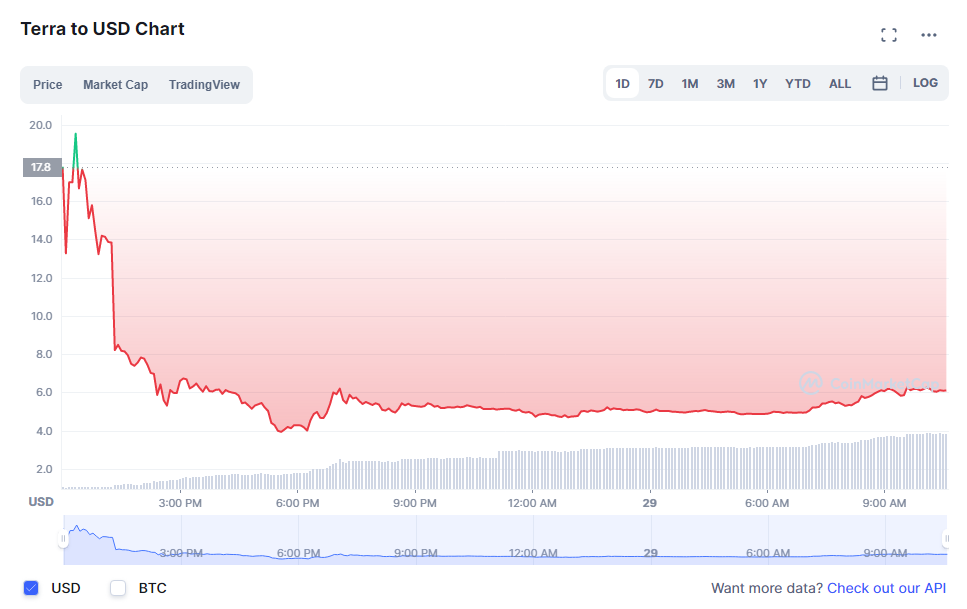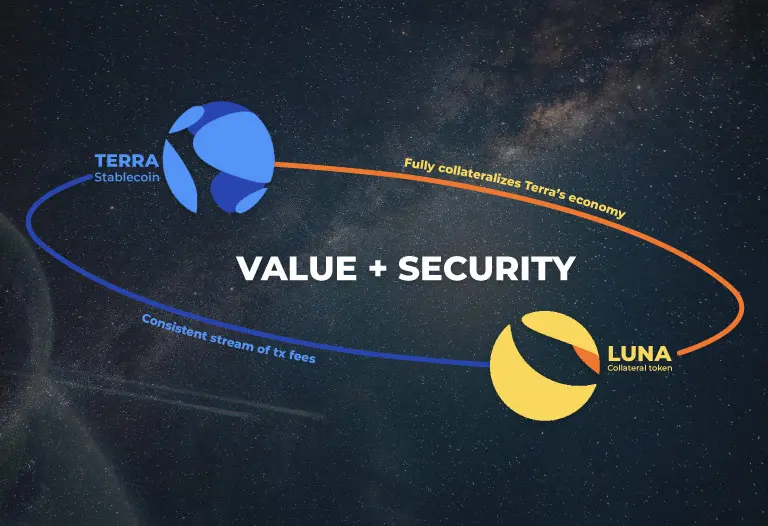Last week, Terraform Labs announced the release of Luna 2.0 — a revived version of the Luna token that crashed earlier this month.
The token, launched a few days ago, is hosted on a brand new blockchain that’s also by Terraform Labs.
This change, proposed by Terraform Labs founder Do Kwon, passed with 65 per cent approval from the community.
What does this mean for holders of the old Luna tokens?
The new blockchain means that there is no shared history with the classic Terra and Luna tokens — no applications from the classic blockchain are automatically part of the new blockchain.
That being said, some applications have already migrated to the new blockchain, including Terraswap, Edge Protocol, and others.
LUNA 2.0 tokens were airdropped to holders as well, and went up for trading at the same time.
Several changes were made to the new Luna blockchain. For one, the Terra UST stablecoin is no longer part of the system. The new blockchain also comes with a fixed total supply of one billion tokens, down from Luna Classic’s more than 6.5 trillion.
These changes are significant — Luna was initially intended to collateralise the Terra stablecoin.
Yet, this stablecoin is no longer part of the blockchain. The Luna token, in effect, has lost its raison d’être. It has no function besides acting as a native token to the Terra system, which now no longer has a stablecoin.
This system is not new, but it is also no longer interesting or viable. After all, what can holders of the new Luna tokens do with it, besides hoping against all hope that the value will rise?
The market already seems to be signalling its lack of hope. Investors have already begun to sell their airdropped Luna 2.0 tokens, and was down 75 per cent a mere 12 hours after it launched.

Investors seem to have little to no confidence in the new token, and for good reason.
The bulk of the reason why they bought in in the first place was that they were promised a stablecoin — an investment that would appreciate, backed by an ingenious algorithm.
Without it, there are simply better investments to be found elsewhere, and the opportunity cost and risk of holding Luna is simply not worth it.
There was even drama before the launch, with prominent investors protesting the governance structure of the vote and accusations of Terraform Labs strong arming the vote.
Learning the wrong lessons
I have previously argued that the Terra-Luna pair were not beyond saving, but Terraform Labs must actively learn from their mistakes.
This change seems to imply that they have completely given up on the project, if anything. They have abandoned the stablecoin portion of the project, without any indication that it will return.

This in itself is a huge mistake. Many investors were confident in the initial Terra-Luna pair precisely because it was a stablecoin, and the price of Terra would be pegged to the USD at a 1 to 1 exchange rate.
Without the backing of Terra and confidence in the price of the USD, what is the basis for believing that Luna will be worth anything?
Of course, there is an argument to be made that having a currency not backed by anything does not automatically mean it cannot be worth anything. Our current monetary system of fiat currencies proves that much.
However, governments also ensure that there is a use for the fiat currencies that they issue — legal requirements that only their currency is legal tender within the country, taxes, and so forth.
Money not backed by anything, in other words, can still function as money if it acts as a medium of exchange with demand for the currency.
Is the new Luna blockchain doing this? Certainly. Some applications have already migrated to the new chain, including decentralised exchanges, indexes, and more.
This might show signs of promise — Luna holders can now use the tokens as collateral to borrow other currency, purchase items on marketplaces et cetera. Only time will tell how much this demand can keep up, and a significant proportion of the new tokens have been purposely vested in order to ensure that they cannot be sold immediately upon release.
If we consider this fact in conjunction with the fact that the prices of the Luna 2.0 tokens crashed almost right out of the gate, we can see that the effect of artificially inflating demand is not a guaranteed way of keeping the price of Luna’s tokens up as well.
The vote that never was
If Do Kwon cannot count on the market to support Luna, can he at least count on his followers’ support?
Unfortunately, it seems to be a no on this front too. The concerns raised over the governance structure of the vote and of Do Kwon’s leadership suggest that Terraform Labs has also lost the backing of significant portions of its community.
About two weeks ago, Do Kwon’s Luna Foundation Guard (LFG) swapped around 883 million UST for 221 million Luna and staked this with validators, providing them with approximately 60 per cent of the voting power.
They claimed that this was to protect against a possible governance attack, but this also meant that any proposal that the LFG supported would automatically pass unless a significant bulk of other investors vetoed the proposal.
Contrary to the ethos of decentralisation and democratisation in the cryptocurrency community, Do Kwon effectively made himself the sole dictator of the entire blockchain.
In this light, the community’s lack of support becomes startlingly clear, as do the reasons for the selloffs of the airdropped Luna 2.0 tokens.
Terraform Labs has essentially burnt through the trust of its community in the past month — beginning with the UST-Luna crash, the ‘governance vote’, and now, with the new crash in Luna’s price.
Can Terraform Labs recover from this breach of trust? The ball is really in their court to prove that they can be trusted again.
But their recent actions have suggested that they are not interested in a situation where they no longer actually control what happens in the Terra and Luna ecosystem. And in a cult of personality like this, the outcome is often dire for the entire regime when the dictator at the top is no longer sacrosanct.
With the new coin no longer promising stability and only minimal returns, the end of the Luna community may soon be upon them — quite the unfortunate end for a promising startup with an ingenious idea.
Featured Image Credit: Bloomberg










